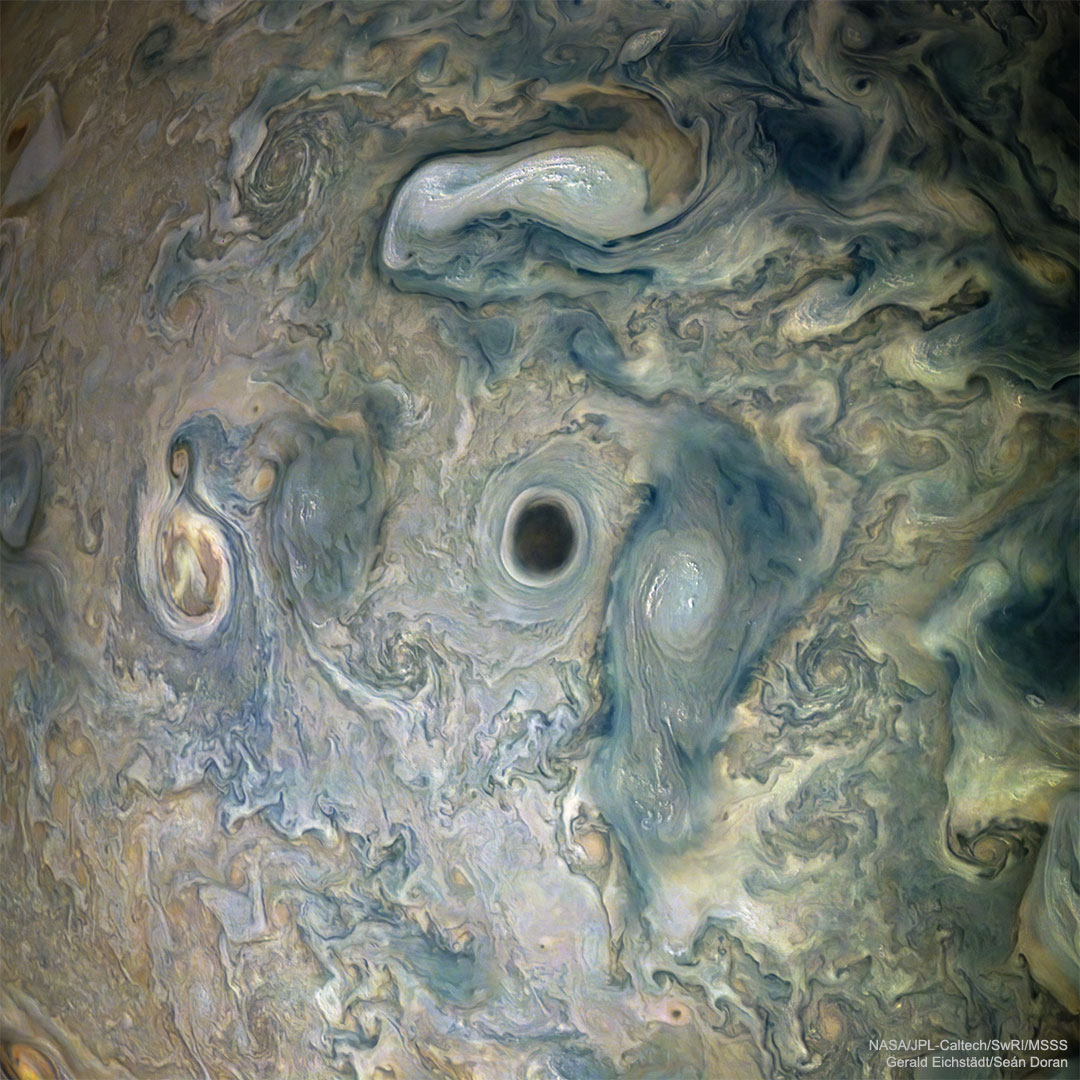Nombre total de pages vues
18/06/2025
METEOROLOGIE - A sec
ASTRONOMY - Space Station Silhouette on the Moon
2025 June 18
Image Credit & Copyright: Eric Holland
Explanation: What's that unusual spot on the Moon? It's the International Space Station. Using precise timing, the Earth-orbiting space platform was photographed in front of a partially lit gibbous Moon in 2019. The featured image was taken from Palo Alto, California, USA with an exposure time of only 1/667 of a second. In contrast, the duration of the transit of the ISS across the entire Moon was about half a second. A close inspection of this unusually crisp ISS silhouette will reveal the outlines of numerous solar panels and trusses. The bright crater Tycho is visible on the lower left, as well as comparatively rough, light colored terrain known as highlands and relatively smooth, dark colored areas known as maria. Downloadable apps can tell you when the International Space Station will be visible from your area.
ASTRONOMY - Rosette Nebula Deep Field
2025 June 17
Image Credit: Toni Fabiani Méndez
Explanation: Can you find the Rosette Nebula? The red flowery-looking nebula just above the image center may seem a good choice, but that's not it. The famous Rosette Nebula is really located on the lower right, here colored blue and white, and connected to the other nebulas by gold-colored filaments. Because the featured image of Rosette's field is so wide, and because of its deep red exposure, it seems to contain other flowers. Designated NGC 2237, the center of the Rosette Nebula is populated by the bright blue stars of open cluster NGC 2244, whose winds and energetic light are evacuating the nebula's center. The Rosette Nebula is about 5,000 light years distant and, just by itself, spans about three times the diameter of a full moon. This flowery field can be found toward the constellation of the Unicorn (Monoceros).
17/06/2025
SANTé/MEDECINE - Procédé révolutionnaire dans la lutte contre le cancer - 1/6 : Introduction
16/06/2025
LA TERRE VUE DU CIEL - Le mont Elgon en Afrique
15/06/2025
ASTRONOMY - Two Worlds, One Sun
2025 June 15
Left Image Credit & Copyright: Damia Bouic;
Right Image Credit: NASA, JPL-Caltech, MSSS; Digital processing: Damia Bouic
Explanation: How different does sunset appear from Mars than from Earth? For comparison, two images of our common star were taken at sunset, one from Earth and one from Mars. These images were scaled to have the same angular width and are featured here side-by-side. A quick inspection will reveal that the Sun appears slightly smaller from Mars than from Earth. This makes sense since Mars is 50% further from the Sun than Earth. More striking, perhaps, is that the Martian sunset is noticeably bluer near the Sun than the typically orange colors near the setting Sun from Earth. The reason for the blue hues from Mars is not fully understood, but thought to be related to forward scattering properties of Martian dust. The terrestrial sunset was taken in 2012 March from Marseille, France, while the Martian sunset was captured in 2015 by NASA's robotic Curiosity rover from Gale crater on Mars.
14/06/2025
ASTRONOMIE - Iréelle
ASTRONOMY - Meteors and Satellite Trails over the Limay River
2025 June 14
Image Credit & Copyright: Martín Moliné
Explanation: What are all those streaks in the sky? A galaxy, many satellite trails, and a few meteors. First, far in the distance, the majestic band of our Milky Way Galaxy runs down the left. Mirroring it on the right are several parallel trails of Earth-orbiting Starlink satellites. Many fainter satellite trails also crisscross the image. The two short and bright streaks are meteors — likely members of the annual Eta Aquariids meteor shower. The planet Venus shines on the lower right. Venus and the satellites shine by reflected sunlight. The featured picture is a composite of exposures all taken in a few hours on May 4 over the Limay River in Argentina.
13/06/2025
METEOROLOGIE - Le jour où des grêlons d’1 kg sont tombés : 92 victimes
ASTRONOMY - Rubin's Galaxy
2025 June 13
Image Credit: NASA, ESA, B. Holwerda (University of Louisville)
Explanation: In this Hubble Space Telescope image the bright, spiky stars lie in the foreground toward the heroic northern constellation Perseus and well within our own Milky Way galaxy. In sharp focus beyond is UGC 2885, a giant spiral galaxy about 232 million light-years distant. Some 800,000 light-years across compared to the Milky Way's diameter of 100,000 light-years or so, it has around 1 trillion stars. That's about 10 times as many stars as the Milky Way. Part of an investigation to understand how galaxies can grow to such enormous sizes, UGC 2885 was also part of An Interesting Voyage and American astronomer Vera Rubin's pioneering study of the rotation of spiral galaxies. Her work was the first to convincingly demonstrate the dominating presence of dark matter in our universe. A new U.S. coin has been issued to honor Vera Rubin, while the Vera C. Rubin Observatory is scheduled to unveil images from its first look at the cosmos on June 23.
ASTRONOMY - Jupiter Abyss
2024 November 3 Jupiter Abyss Image Credit: NASA , Juno , SwRI , MSSS ; Processing & License : Gerald Eichstädt & Sean Dor...

-
2022 September 26 All the Water on Planet Earth Illustration Credit: Jack Cook, Adam Nieman, Woods Hole Oceanographic Institution ; Data ...
-
2025 May 11 The Surface of Venus from Venera 14 Image Credit: Soviet Planetary Exploration Program , Venera 14 ; Processing & Copyri...









